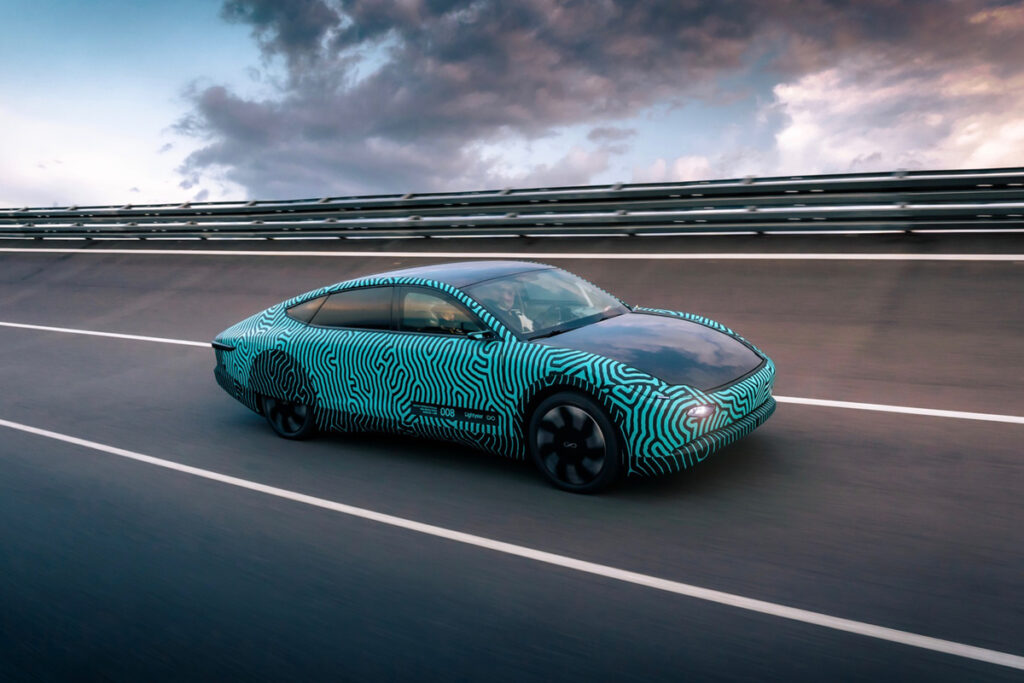EarthTalk®
From the Editors of E – The Environmental Magazine
Dear EarthTalk: Are there any electric vehicles available that can charge up using solar power (so you don’t have to plug them in to charge them)? — Bill Kelly, Galveston, TX
Yes, there are electric vehicles (EVs) available that can be charged using solar power. Often referred to as solar-powered EVs or solar-charging EVs, these vehicles integrate solar panels into their design to harness solar energy and convert it to electricity for the vehicle’s batteries. Solar charging alone may not be enough to power an EV completely, but it can provide additional power and extend the vehicle’s range.
Solar-powered EVs use photovoltaic (PV) cells, which are typically installed on the roof or other parts of he vehicle’s body. These cells capture sunlight and convert it into electricity through the photovoltaic effect. The generated electricity is then used to charge the EV’s battery pack or supplement its power requirements, reducing the reliance on grid electricity.
One example of a solar-powered EV is the Lightyear One, developed by a Dutch company called Lightyear. This EV is equipped with solar panels integrated into its roof and hood. Its solar panels are highly efficient, enabling them to charge the vehicle’s battery while it is parked or in motion. The company claims that the solar panels can provide up to 12 kilometers (7.5 miles) of range per hour of solar charging, depending on weather conditions.
Another notable example is the Sono Sion, an EV developed by a German startup called Sono Motors. The Sion is covered with solar panels that can generate electricity to charge the vehicle’s battery. The car also features bidirectional charging, allowing it to share its excess energy with other devices or even power another EV. The Sono Sion’s solar panels are expected to provide approximately 30 kilometers (18.6 miles) of additional range per day through solar charging, according to the company.
It’s worth noting that the efficiency and range added by solar charging depend on various factors such as the size of the solar panels, the weather conditions, the amount of sunlight available and the energy requirements of the vehicle. While solar charging can be a convenient and eco-friendly way to extend the range of an EV, it is not intended to replace traditional charging methods entirely.
In addition to solar-powered EVs, there are also aftermarket solutions available for existing electric vehicles. These solutions involve retrofitting solar panels onto the roofs or other parts of the vehicle to enable solar charging. These aftermarket options may not provide as seamless an integration as purpose-built solar-powered EVs, they can still offer an opportunity to harness solar energy and reduce the reliance on grid electricity.
Solar-powered EVs and solar charging technologies are continually evolving as researchers and manufacturers explore ways to improve efficiency and integration. The combination of renewable energy generation through solar power and the increasing adoption of electric vehicles represents a promising step towards a sustainable and clean transportation future.
CONTACTS: Lightyear One, lightyear.one; The Sono Sion Solar Car Is Coming to the US, Here’s What It Will Do, cnet.com/roadshow/news/the-sono-sion-solar-car-is-coming-to-the-us-heres-what-it-will-do; Why solar electric vehicles might be the next generation of EVs, cnbc.com/2022/11/22/how-sono-aptera-and-lightyear-are-making-solar-powered-evs-a-reality.html.
EarthTalk® is produced by Roddy Scheer & Doug Moss for the 501(c)3 nonprofit EarthTalk. See more at https://emagazine.com. To donate, visit https://earthtalk.org. Send questions to: question@earthtalk.org.

